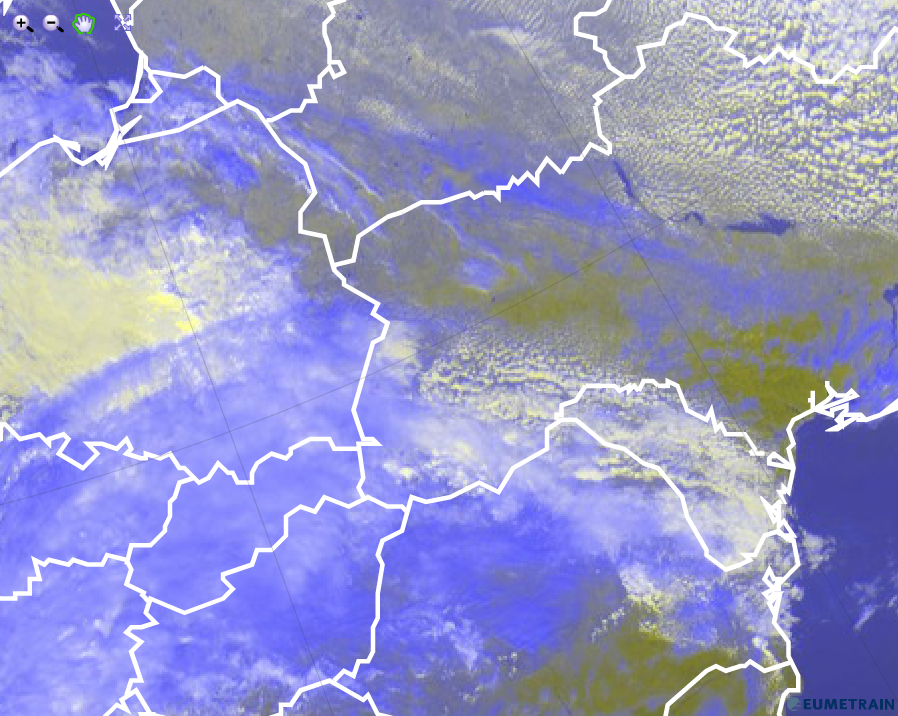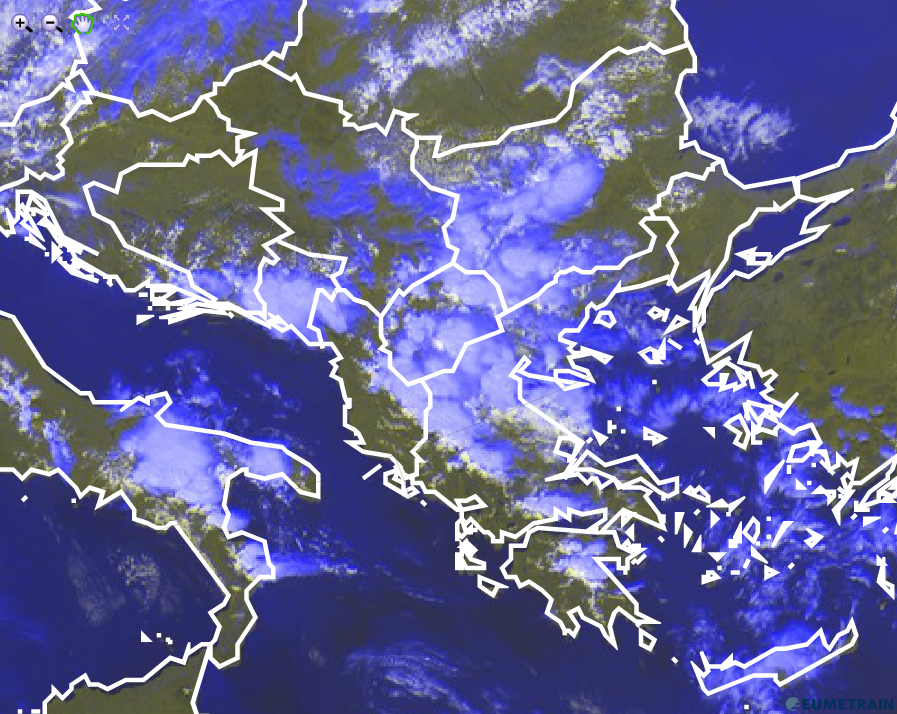Thin cirrus clouds
Thin and cold Cirrus clouds appear blue in the HRV Cloud RGB images.
Radiation measured by the HRV channel of the SEVIRI instrument does not contribute in case of cirrus clouds because it is negligible. The contribution from visible channels is strongly related to the optical thickness of a cloud. Cirrus clouds, mainly composed of ice crystals, are more or less transparent for short wave radiation. Cirrus clouds do not reflect short wave solar radiation.
The blue colour prevails in the HRV Cloud RGB for high Cirrus clouds because these high level clouds are very cold. In contrast to short wave radiation, IR radiation from the earth is absorbed by the ice crystals.
The Cirrus clouds can be found as jet cloud fibres (see left hand image, red arrows) or on top of frontal cloudiness (e.g. a warm front). The image below shows an extended warm front over eastern Europe. Atop of the warm front, cirrus cloudiness depicts in blue tones.

HRV Cloud RGB from 1 October 2014, 12:00 UTC
In case of convection, the Cirrus anvil can be clearly discriminated from the rest of the cloud cell (see image below).

HRV Cloud RGB from 9 May 2015, 12:00 UTC
Explanation of the blue colour of Cirrus clouds in the HRV Cloud RGB (see the recipe):
Only the IR10.8 micrometer channel contributes notably to the HRV Cloud RGB in case of Cirrus clouds. Thin ice crystal clouds are transparent for short wave solar radiation.

